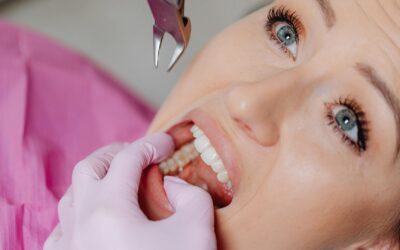A toothache might seem like a minor nuisance, but when left untreated, it can lead to something far more dangerous—sepsis. Sepsis is the body’s life-threatening response to an infection, and it can start from something as seemingly simple as an infected tooth. If you’re wondering what are signs of sepsis from a tooth infection, or how to catch the early signs of sepsis from tooth infection, this article covers everything you need to know—backed by real medical insights and structured to help you recognize red flags early.
Remember: Sepsis from a dental origin isn’t common—but when it happens, it’s an emergency. Acting fast can save a life.
- How Can a Tooth Infection Lead to Sepsis?
- First Signs of Sepsis from Tooth Infection
- Cognitive and Behavioral Symptoms to Watch
- Skin and Oral Indicators
- Recap: Common Signs of Sepsis from Infected Tooth
- How Common Is Sepsis from a Tooth Infection or Procedure?
- Prevention and When to See a Dentist
- FAQs
- Final Thoughts
🦷 How Can a Tooth Infection Lead to Sepsis?
A tooth infection, also known as a dental abscess, forms when bacteria invade the soft inner tissue of a tooth. If not treated, the infection can spread beyond the tooth’s root and enter the bloodstream, reaching vital organs and triggering sepsis, a systemic inflammatory response.
This spread is more likely if:
- You delay or skip dental treatment.
- You have a weakened immune system.
- The infection is deep in the jaw or near major blood vessels.
See Also: Top 10 Natural Antibiotics for Tooth Infection Relief
🚨 First Signs of Sepsis from Tooth Infection
Recognizing the first signs of sepsis from tooth infection can mean the difference between recovery and serious complications. Here’s what to watch for:
1. Fever and Chills
A sudden high fever (above 101°F or 38.5°C) is often one of the early signs of sepsis. It may come with uncontrollable shivering or chills.
2. Rapid Heart Rate
Sepsis can cause your heart to beat faster than normal, even when you’re resting. This is your body’s way of trying to fight the infection.
3. Low Blood Pressure or Dizziness
Low blood pressure caused by sepsis can lead to dizziness, confusion, or fainting.
Note: If you’re feeling lightheaded or your heart is racing after a dental issue, don’t wait—seek emergency care.
4. Shortness of Breath
As sepsis progresses, your breathing may become fast or shallow. In severe cases, this is a sign that organs are being affected.
5. Extreme Fatigue or Weakness
A deep, overwhelming fatigue—especially if it comes on suddenly—could be your body reacting to systemic infection.
🧠 Cognitive and Behavioral Symptoms to Watch
In addition to physical symptoms, sepsis can affect your mental state:
- Confusion or disorientation
- Difficulty staying awake
- Slurred speech
These symptoms indicate your brain isn’t getting enough oxygen, which is a medical emergency.
Expand Your Knowledge: Will Listerine Kill Tooth Infection? Avoid These Mistakes
🩸 Skin and Oral Indicators
Don’t ignore changes in the skin or the infected area:
- Pale, clammy, or mottled skin
- Swelling in the jaw, cheek, or neck
- Pus or a bad taste in the mouth
- Skin turning bluish (especially on lips or fingertips)
Reminder: Swelling spreading to your neck or eyes from a tooth abscess is a sign the infection is spreading fast.
🧾 Recap: Common Signs of Sepsis from Infected Tooth
Here’s a checklist of signs of sepsis from an infected tooth to keep in mind:
- ✅ High fever and chills
- ✅ Rapid heartbeat and breathing
- ✅ Low blood pressure and dizziness
- ✅ Confusion or altered mental state
- ✅ Swollen jaw or face
- ✅ Unusual fatigue
If you or someone you love shows multiple signs, especially after a known tooth infection, head to the nearest emergency room immediately instead of trying natural antibiotics for dental infection at home.
📊 How Common Is Sepsis from a Tooth Infection or Procedure?
While rare, sepsis from a tooth abscess or infection is a serious risk, especially when dental issues are left untreated. According to medical case reviews, sepsis after tooth extraction is not very common but can occur in individuals with weakened immune systems, poor oral hygiene, or undiagnosed infections before the procedure. So, how common is sepsis from tooth infection? It’s estimated that dental infections account for a small percentage of sepsis cases overall, but the consequences can be life-threatening if ignored. Prevention is key—treating dental abscesses early and following proper post-extraction care dramatically reduces the risk of complications like sepsis.
⚠️ Remember: Always consult a dentist promptly if you notice swelling, pus, or fever after dental work—early care can save lives.
🛡️ Prevention and When to See a Dentist
To prevent sepsis, treat dental infections as medical issues—not just oral ones.
Steps to take:
- Never ignore a toothache or swelling.
- Complete any prescribed antibiotics fully.
- Get regular dental checkups.
- Visit the ER if you have systemic symptoms.
Risk Factors to Be Aware Of:
- Diabetes
- Cancer treatments or immunosuppressants
- Recent surgery or open wounds in the mouth
FAQs
Can you get sepsis from a tooth infection?
Yes, you can get sepsis from a tooth infection if the infection spreads into the bloodstream. Although it’s not very common, untreated dental abscesses or severe infections can trigger a systemic inflammatory response, leading to sepsis. Immediate medical or dental care is crucial if symptoms escalate.
How common is sepsis from tooth infection?
Sepsis from a tooth infection is relatively rare but potentially fatal. It typically occurs in people with weakened immune systems or in cases where the dental infection is ignored or improperly treated. Early dental intervention significantly lowers the risk.
What are signs of sepsis from a tooth infection?
The most common signs of sepsis from a tooth infection include high fever, rapid heart rate, confusion, extreme fatigue, low blood pressure, and chills. These symptoms often accompany ongoing swelling or pus around the infected tooth and require emergency care.
Early signs of sepsis from tooth infection?
Early signs of sepsis from tooth infection may include a sudden increase in heart rate, fever, difficulty breathing, or feeling unusually weak or dizzy. If you notice any of these symptoms alongside a toothache or abscess, seek medical attention immediately.
Signs of sepsis after tooth extraction?
Signs of sepsis after tooth extraction can include persistent fever, rapid breathing or heart rate, swelling that worsens, and disorientation. If these symptoms appear after oral surgery, it may indicate the spread of infection and should be treated as a medical emergency.
🎯 Final Thoughts
Tooth infections are more than just painful—they can be deadly if they progress to sepsis. Knowing what are signs of sepsis from a tooth infection can help you or a loved one act quickly. Remember, the early signs of sepsis from tooth infection are your body’s way of crying out for help.
Your best defense is prompt dental care and listening to your body. Don’t wait until it’s too late.
Disclaimer: The content provided in this article is for educational and informational purposes only. It does not substitute professional medical advice, diagnosis, or treatment. For guidance specific to your dental condition or recovery, please consult your dentist, oral surgeon, or licensed healthcare provider.










0 Comments